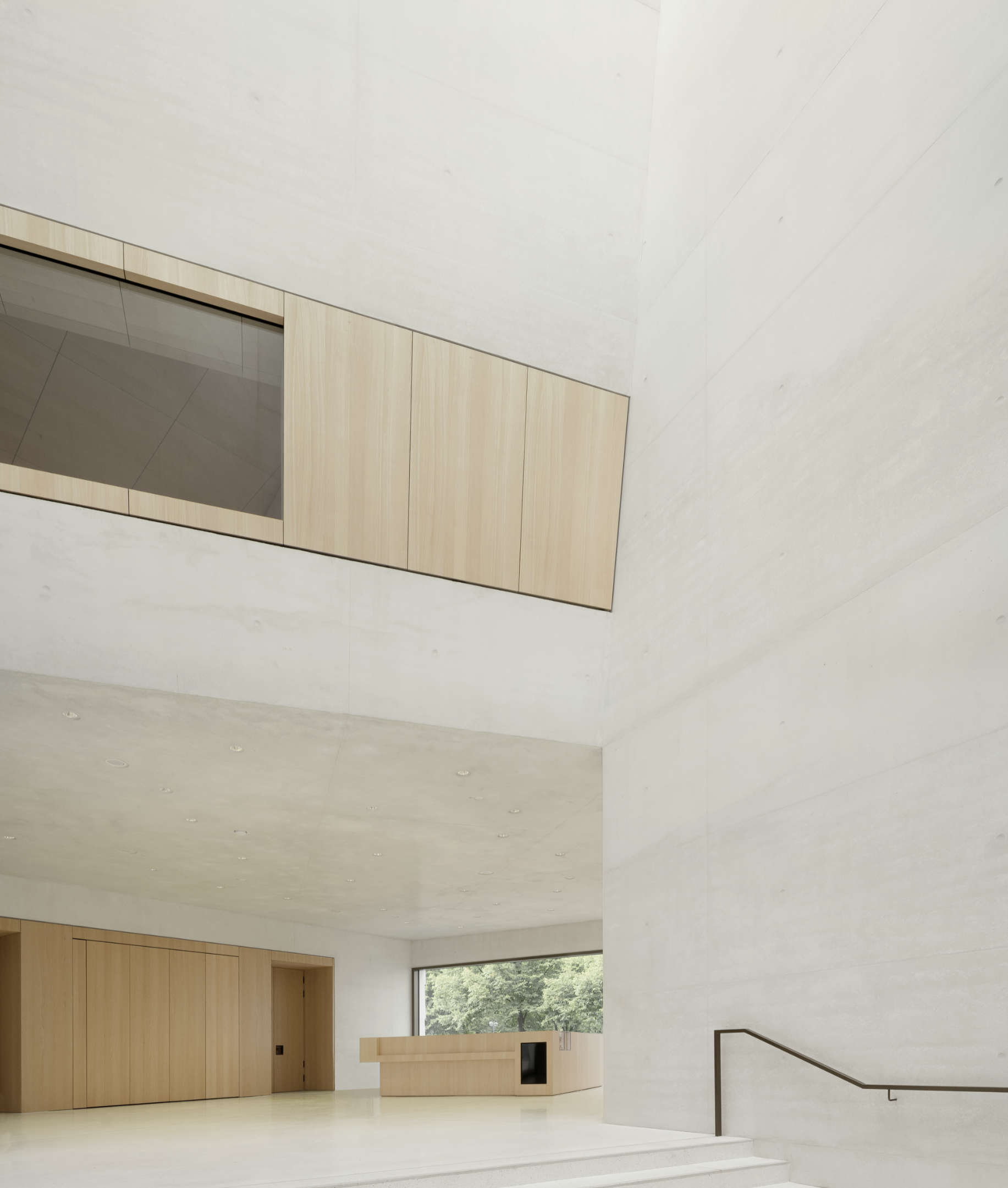Jewish Museum FFM
Staab Architekten

Products
In the 1950s, the Swiss architect, sculptor and designer Max Bill got together with Ernst Moeckel to fashion a door handle that made design history as the ‘Ulm handle’. It, in turn, prompted Johannes Potente to produce the FSB 1023, which has long served as an alternative to the common U-shaped models.

Two eras, one ensemble
In 1988, the Jewish Museum in Frankfurt am Main was the first of its kind in Germany. It was closed for renovation for around five years – during which time public interventions in the urban space have replaced museum operations. The renovated museum, which reopened in October 2020 with a newly built extension, wants to continue this experience with openness and public life. As a communicative ensemble of old and new, it now opens to the city with a public square at its front and invites visitors to become part of its world with a wide range of public offerings. Staab Architekten designed the new build with a five-corner floor plan and positioned it at a distance to the existing building in order to create an expanding outdoor area.
Previously seen as a useless space, the newly appointed Bertha Pappenheim square now enriches the cityscape. A piece by Ariel Schlesinger graces the square, a sculpture of two trees intertwined: one with its roots in the ground, the other with its roots stretching into the sky. The new building interacts subtly with the old in its proportion, elevation and positioning. It continues the light-coloured rendering and discreet horizontal tiers of the facade, so that despite its contemporary monolithic radiance, it still forms a clear and organic ensemble with the old building. Contrary to the Jewish Museum in Berlin, which Daniel Libeskind completed in 2001, Staab Architekten did not produce an architectural interpretation of the existential devastation of the Holocaust.
It may not be symbolically charged architecture, but it does give the visitor occasion to reflect on the images and stories within as they walk through the building. Like the old building, which was once the residence of the Rothschild family, the new building is more a homage to Jewish everyday life in the city. It is only right that the museum comes to life through the inclusion not just of a public library but also a kosher deli, integrating itself in the day-to-day of every Frankfurt resident.
Architect and object
Photo: ©Zuzanna Kałużna
‘The expansive exposed concrete surfaces and free layout of the space evoke a really archaic impression of the space, and this effect is made even stronger by the light streaming in from above,’ Staab Architekten say of the atmosphere in the newly created interior of the Jewish Museum.
Modern minimalism meets the opulence of the ‘Go?t Rothschild’
The interior of the new building is modern, spacious and minimalist. The design is marked by high-quality finishes that give a tangible character to the materials. Finely polished large-format exposed concrete walls, ceilings and steps lend the central corridor connecting all of the areas its contemporary yet timeless radiance.
The library, by contrast, is completely clad in light ash wood, giving it a refined yet cosy atmosphere. The strong reference to the outside world manifests itself repeatedly in oversized window cut-outs that offer a view of the Frankfurt train station quarter.
All of this stands in inspirational contrast to the opulent rooms of the old building, which features vaulted, intricate panelled ceilings, curved lines and classic columns in the ‘Go?t Rothschild’. The architects retained the residential character of the building and restored it by removing the extensions that were added in the 1980s. Visitors tour the museum through a series of rooms, where they can admire the style of Louis XVI just as much as that of Louis XIV. The elegant brass tone, which appears repeatedly in the design by Staab Architekten for the new building in the form of finely pared-down window frames, stairway banisters and doors, can also be seen in the handles used.
The architects opted for the FSB 1023 or the 1053 model, with its gentle curve as an alternative to the classic U-shape. When it comes to door fittings, the safety aspect is especially relevant for a Jewish museum. Handles FSB 73 7575 01510 7625, 73 7575 05510 7625 and 73 7384 01510 6204 were installed as security fittings.
Building details
Photos: ©Brigida Gonzales















